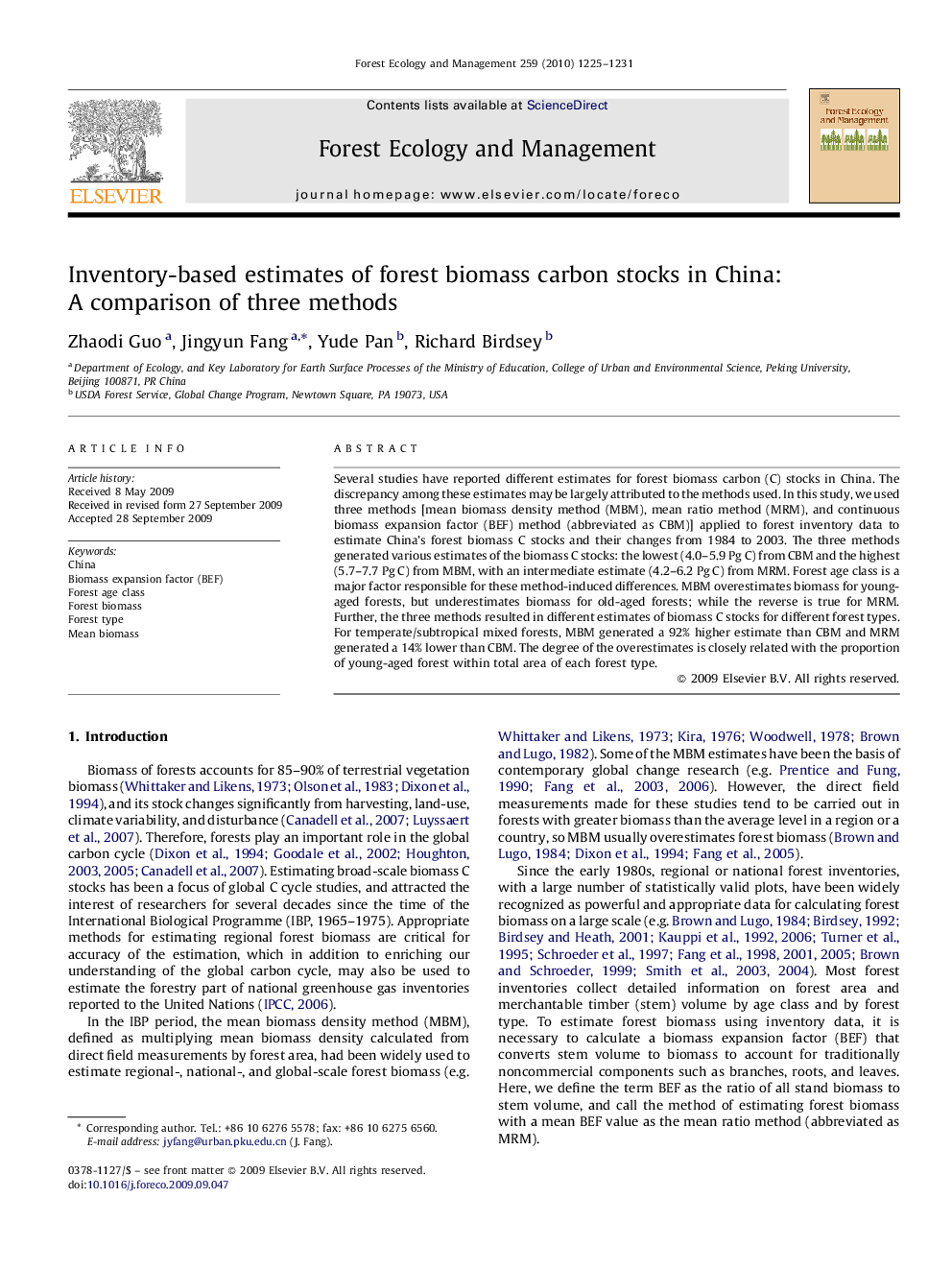| Article ID | Journal | Published Year | Pages | File Type |
|---|---|---|---|---|
| 88613 | Forest Ecology and Management | 2010 | 7 Pages |
Several studies have reported different estimates for forest biomass carbon (C) stocks in China. The discrepancy among these estimates may be largely attributed to the methods used. In this study, we used three methods [mean biomass density method (MBM), mean ratio method (MRM), and continuous biomass expansion factor (BEF) method (abbreviated as CBM)] applied to forest inventory data to estimate China's forest biomass C stocks and their changes from 1984 to 2003. The three methods generated various estimates of the biomass C stocks: the lowest (4.0–5.9 Pg C) from CBM and the highest (5.7–7.7 Pg C) from MBM, with an intermediate estimate (4.2–6.2 Pg C) from MRM. Forest age class is a major factor responsible for these method-induced differences. MBM overestimates biomass for young-aged forests, but underestimates biomass for old-aged forests; while the reverse is true for MRM. Further, the three methods resulted in different estimates of biomass C stocks for different forest types. For temperate/subtropical mixed forests, MBM generated a 92% higher estimate than CBM and MRM generated a 14% lower than CBM. The degree of the overestimates is closely related with the proportion of young-aged forest within total area of each forest type.
